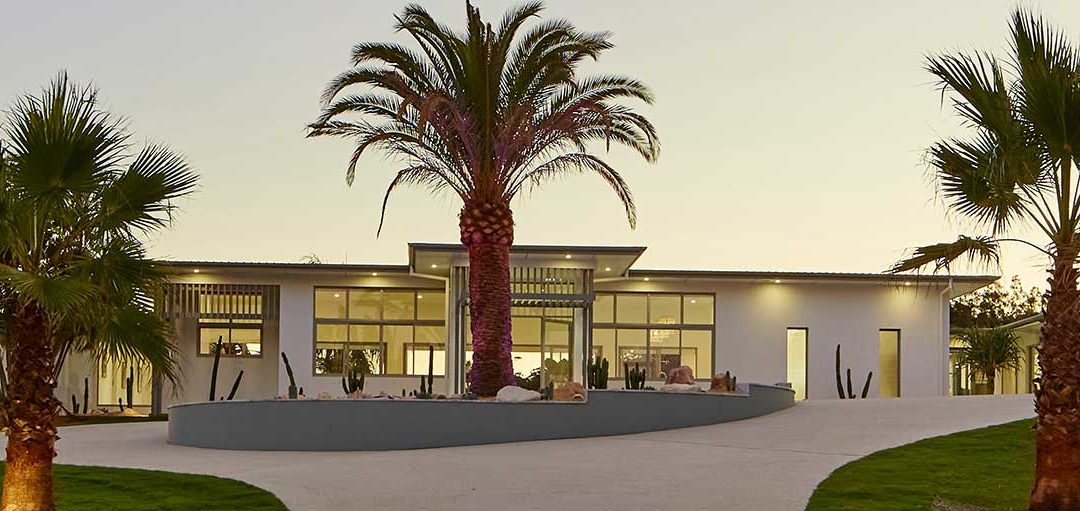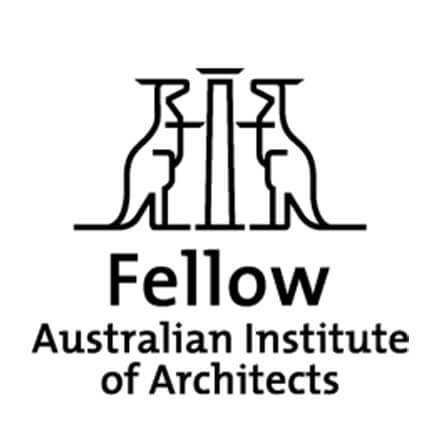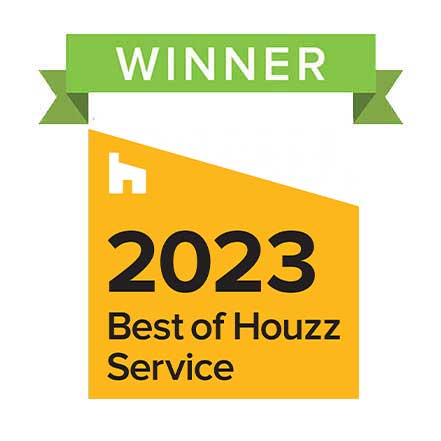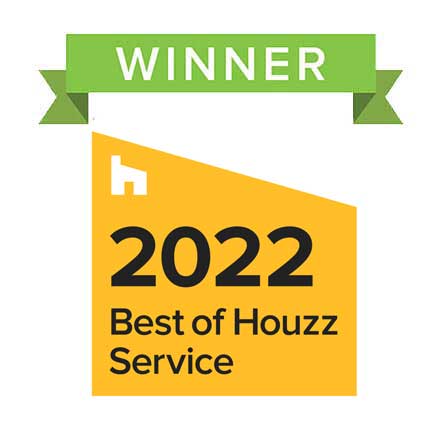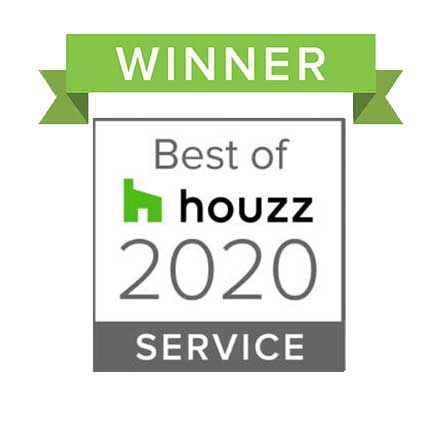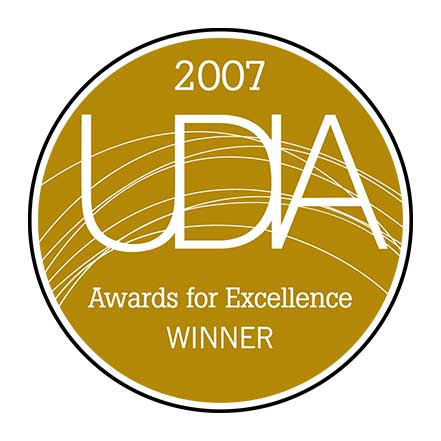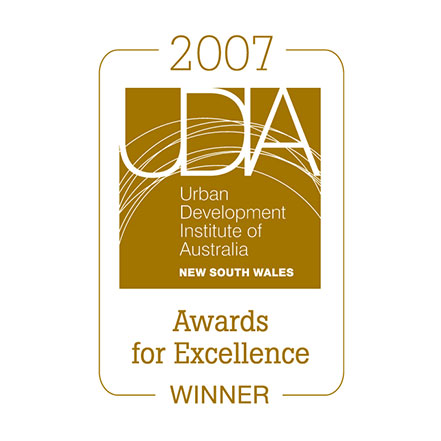At Lea Design Studio we are passionate about architecture, and to ensure we are abreast of the latest design trends, we subscribe to numerous online resources that showcase the latest residential projects from within Australia and around the world.
This daily expose not only provides ongoing design inspiration, but also allows us to see subtle new trends as they emerge and coalesce over time.
This is the latest in our annual series of predictions for architectural trends in styles, building form, materials, and colours that will become more prevalent during 2022.
Acculturation & The Reinvention of Historical Styles
As a relatively young country, Australia has a long history of acculturation or cultural appropriation, defined as adapting to, or borrowing elements from another culture.
A classic example of this in recent times is the adoption of Hamptons style housing, replicating the luxurious Long Island beach houses of affluent New Yorkers.
Whilst this trend is now waning, it is being replaced by a hybrid of other American styles borrowed from the opposite end of the Country.
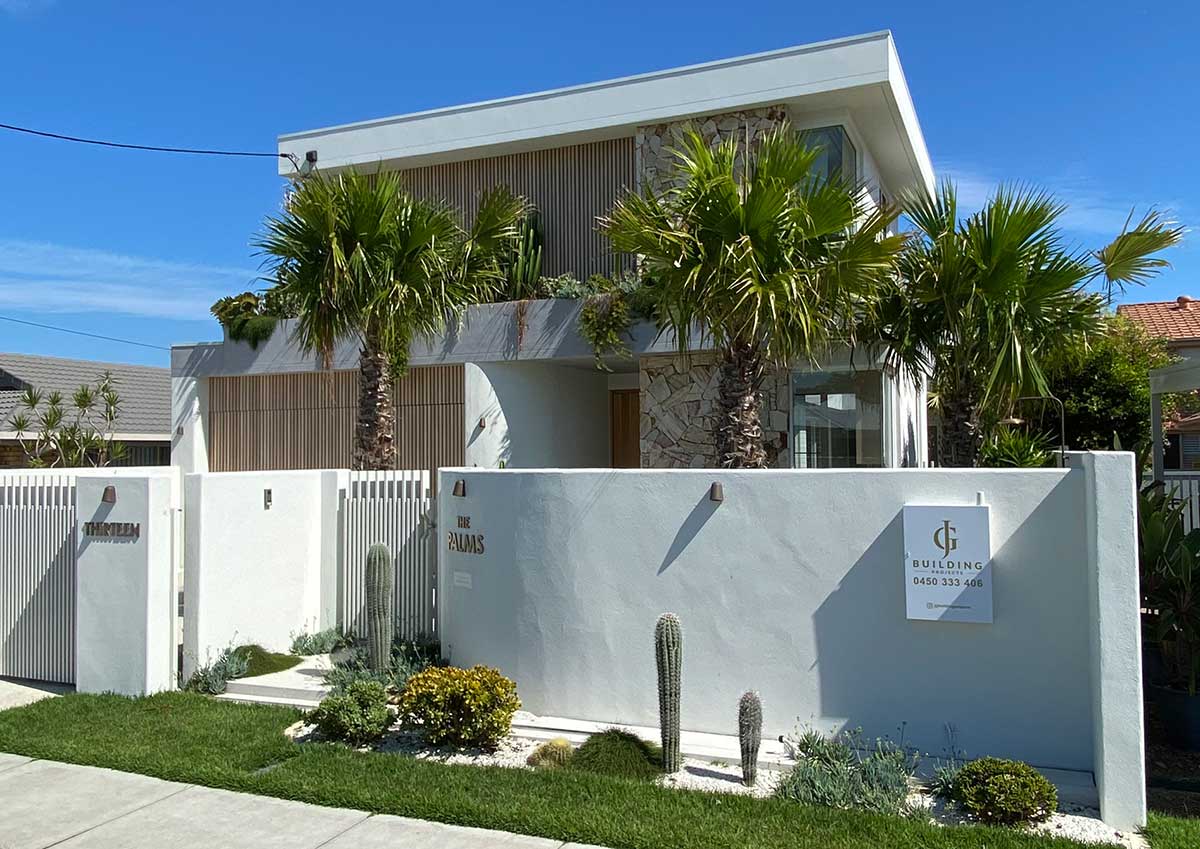
Referred to as the Palm Springs style, it’s a hybrid mix of the easy living mid-century modern architecture so well suited to that locale’s hot desert environment, and the arches, stonework and whitewashed walls of Spanish influenced Californian Architecture. The typical landscape elements associated with these homes incorporate sunken lounges surrounding a central firepit, and gravel garden beds with cacti and palms reinforcing the arid desert theme.
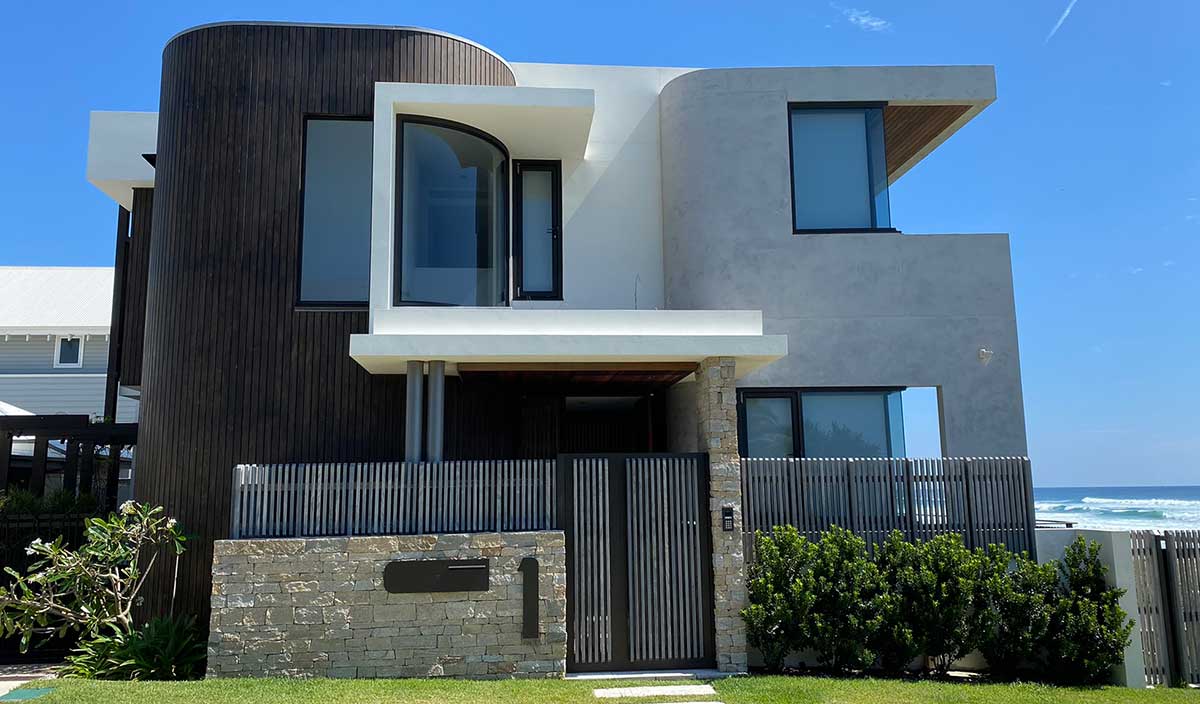
The arches and curved forms becoming prevalent in many new houses in 2022 also borrow from styles of the past. Whilst not geographically specific, they reflect the simplicity of the Art Deco aesthetic which emerged at the beginning of last century (New York’s Chrysler Building is a classic show piece of the style).
This design movement was characterised by pure unadorned geometry which reflected the precise detailing of machines synonymous with this period of industrialisation. Today these curves are being applied in both plan and elevation, and even applied to materials such as glass. Helical stairs are a popular example of curves being applied in plan form.
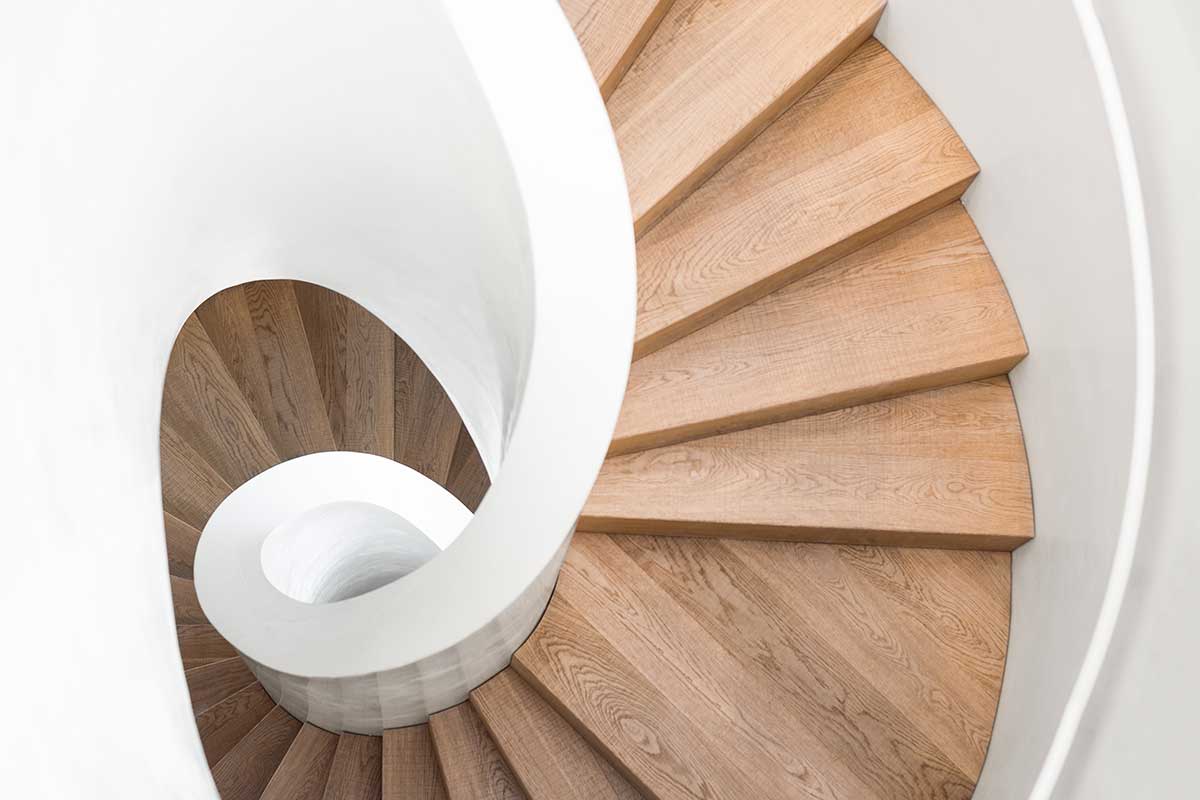
A less popular style from the past is also predicted to emerge as a new trend, driven largely by the current shortage of some building materials.
Brutalism was a style that emerged in the 1950’s post war period and is characterised by bare unadorned materials with exaggerated monolithic structural elements, displaying a pronounced rectilinear geometry. (Brisbane’s QPAC is a local example).
Fortunately, its manifesting primarily as design features, thicker materials, different textured concrete, and recessed windows.
Façade Treatments
The street appeal of homes has always been important to most owners.
A new trend that is becoming prevalent is to conceal the garage door within the wall plane so that it presents as a uniform flat facade.
Elaborate fencing, gatehouses and front doors all contribute to the appeal, as does incorporating a Brise – soleil treatment. This term describes screening applied to the entire façade of a building outside the windows and walls. Used for both sun shading and privacy, it can take many forms including patterned brickwork, breezeblocks, perforated aluminium screens, or vertical battens / aerofoil blades.
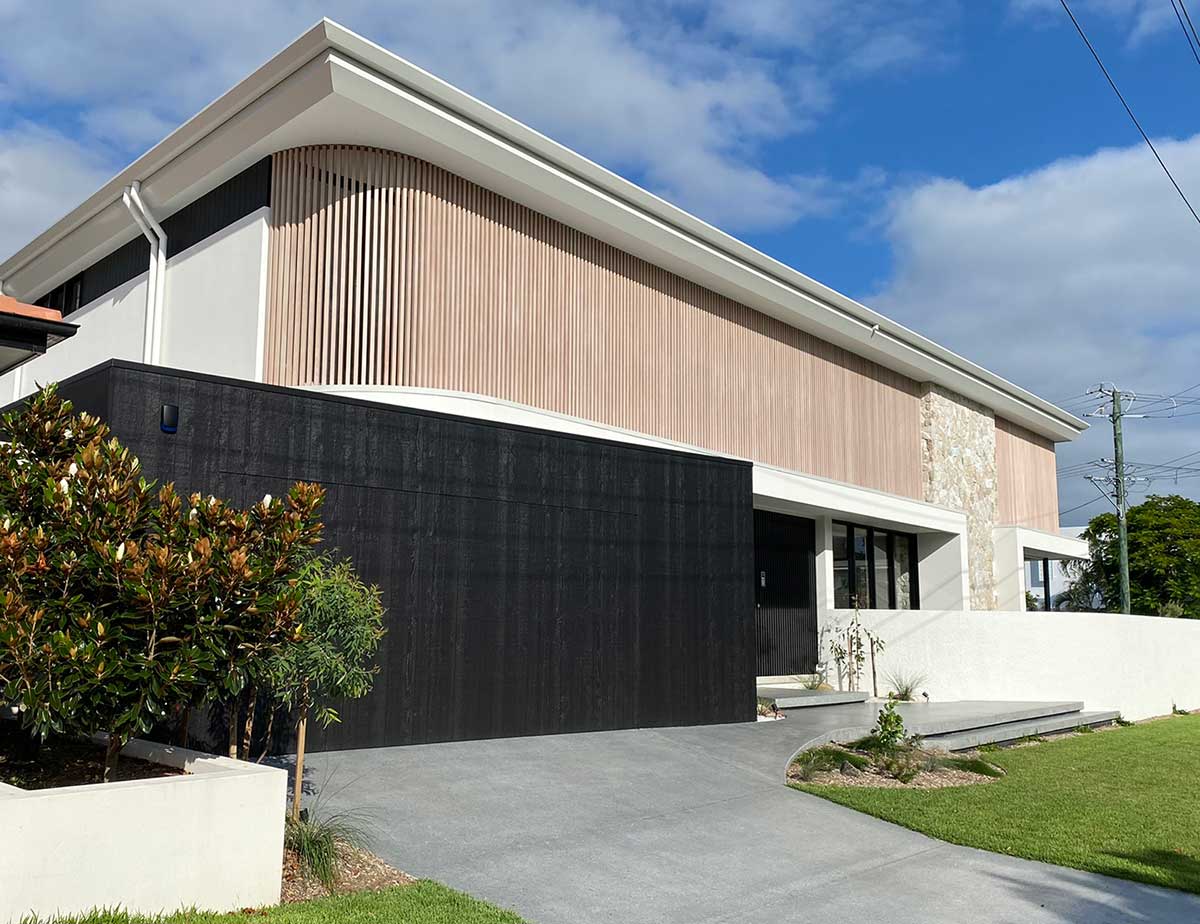
Further façade softening can also be achieved with cascading plants spilling over the front of the building from planters incorporated at upper levels.
In a further nod to the modernist influence on design in 2022, slender steel rod balustrades are very popular. Where glass balustrading is preferable for wind protection or to maximise views, curved glass balustrades are now being used to reflect the plan shape.
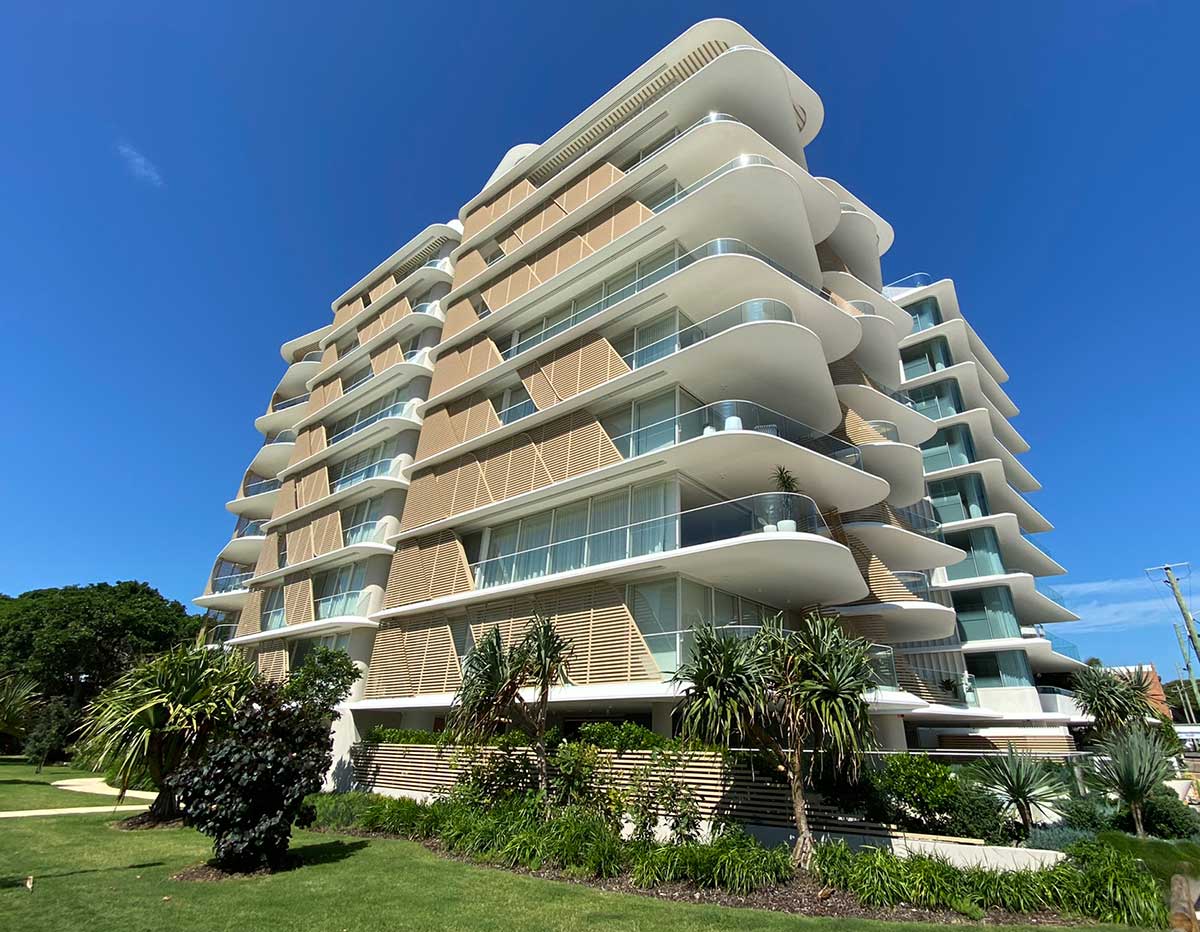
Planning Trends
The impact of COVID is still being felt in the planning of our homes in 2022. Some refer to the resulting layouts as entangled design, spaces that crossover performing multiple functions.
Largely a result of the extended periods of home isolation enforced on us by the pandemic, homeowners were forced to adapt existing spaces to different uses.
In new designs, the planning takes this into account, with home office spaces often incorporated into circulation areas like hallways, or within kitchens or bedrooms.
Contemplation or relaxation spaces for reading are a response to the limitations on external activities which necessitated extended periods of confinement within our homes.
The garage is one of the largest spaces in most homes and is regularly converted to other uses in home renovations. Designing the garage to use as a multipurpose space is a cost-effective way of increasing the living / recreation areas available for use when required.
Materials, Finishes & Colours
These largely reflect the building style adopted in the design.
Palm Spring style houses are typically, clad in a range of materials from expressed brickwork to timber panelling, all painted white with pastel accents – pink is particularly popular.
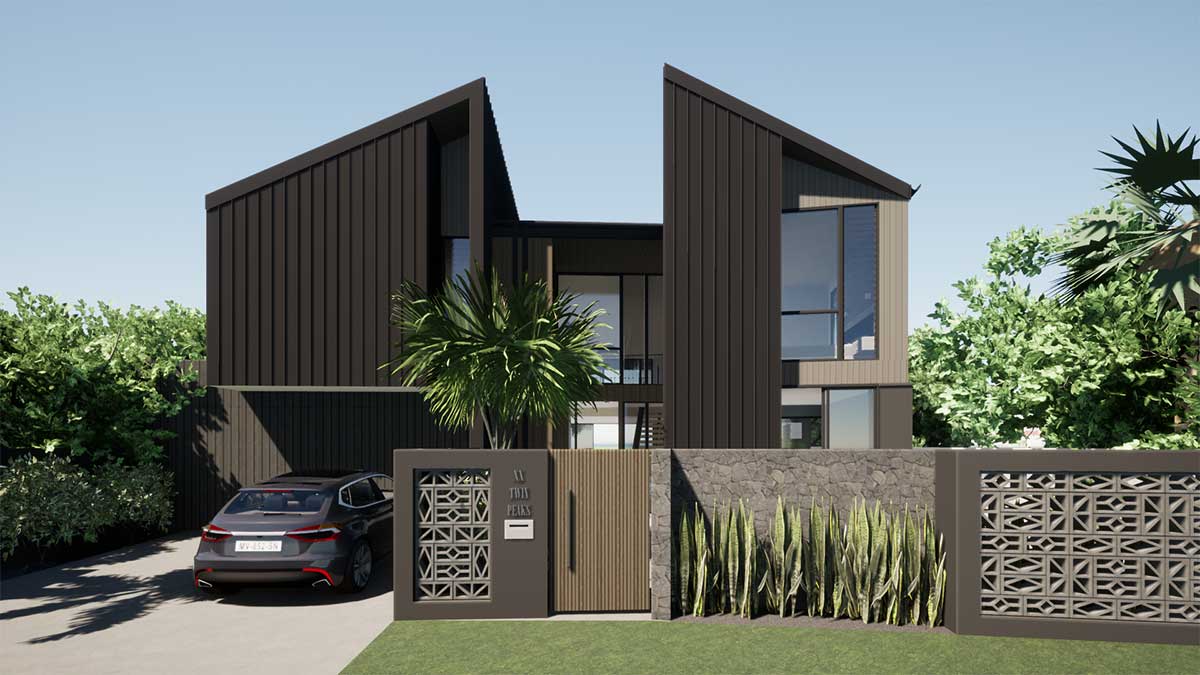
In stark contrast to this light and bright trend, sober dark colours are also being used. Often paired with natural materials like timber and stone, charcoal grey (colorbond monument) is very popular, especially when combined with dramatic steep pitched roofs that flow seamlessly into walls, clad in standing seam wide pan metal sheets.
Both colour trends continue within the home interior.
The more whimsical light pastel colours are used in fabrics with organic patterns for restful spaces like bedrooms, whilst more functional spaces including kitchens and bathrooms use brooding dark navy blue or charcoal.
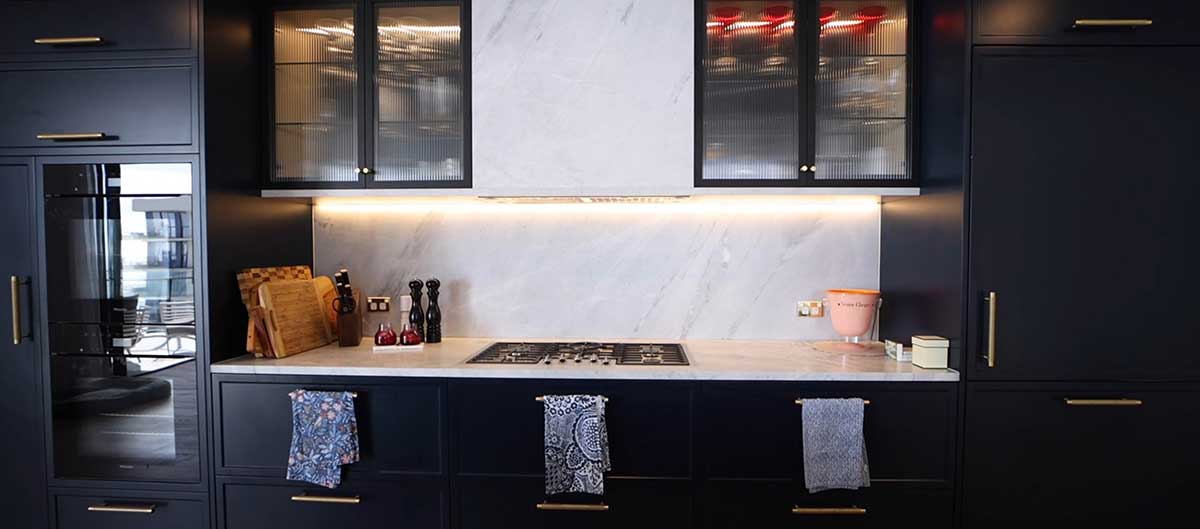
Both colour schemes work well together and are often successfully combined.
The link below shows a good example of how current design trends can be successfully applied even to a classical period home.
https://www.homestolove.com.au/historic-melbourne-mansion-modern-interiors-23301
Technology and Sustainability
Advances in nanotechnology will have a significant impact on the building materials that we use in construction of houses in 2022 and beyond.
Self-healing concrete promises to be a revolutionary product repairing cracks caused by shrinkage or exposure to the elements. Developed in the Netherlands, the concrete is infused with bacterial spores that are activated by water and patch up cracks. This has both practical and aesthetic benefits, polished concrete floors are notoriously difficult to keep from developing hairline cracking
A further development in the composition of concrete promises to eliminate the need for steel reinforcement, one of the biggest cost components. Nanomaterials are combined with ultra-high strength concrete creating an extremely strong material in both compression and tension.
Nanotechnology has also allowed significant improvement in the efficiency of solar panels. The number of solar cells per surface area increases dramatically, promising to reduce costs and finally make solar a viable alternative to fossil fuel energy production.
Fully transparent solar cells will eventually replace glass in our windows offering immeasurable benefits in passively harvesting solar energy.
A NASA developed technology is also being applied to residential applications. Thermablok is an aerogel Insulation material for use in buildings, one of the lightest materials available as well as one of the highest insulators.
Continuing Trends
Trends develop over time and can last for a number of years. Consequently, design trends from the recent past are often still applicable to the present, and the near future.
If you are interested in these ongoing trends, you can review some of our previous predictions on our website below.
Architectural Design Trends for 2021
You might also be interested in...
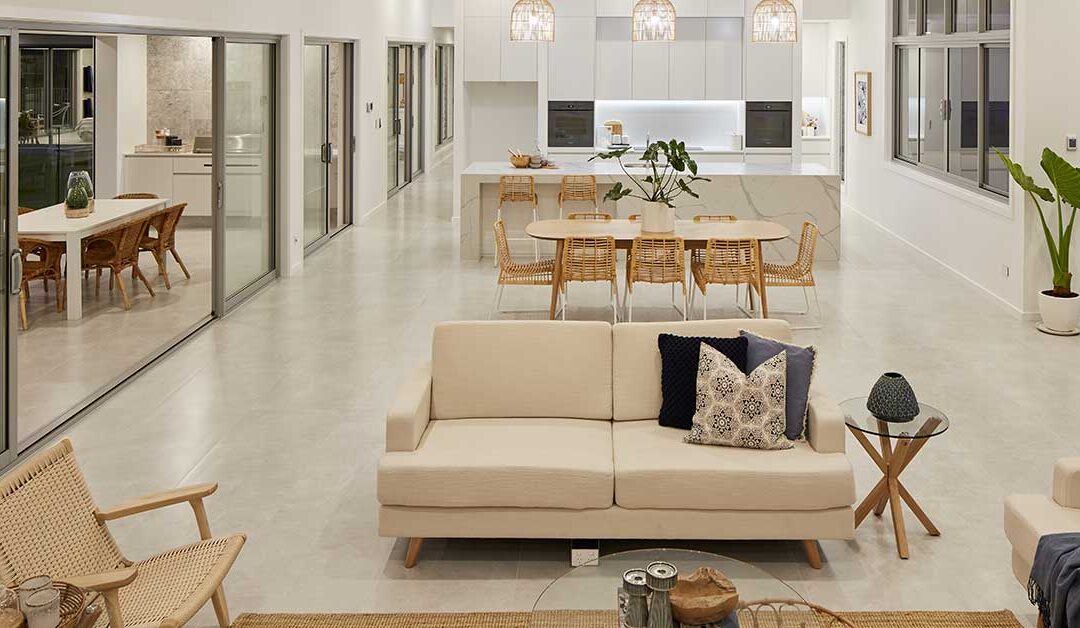
The Most Popular Home Configurations in Australia in 2024
Discover 2024’s top Australian home configurations: bedrooms, bathrooms, and parking preferences. Explore how changing lifestyles shape popular house configurations nationwide.
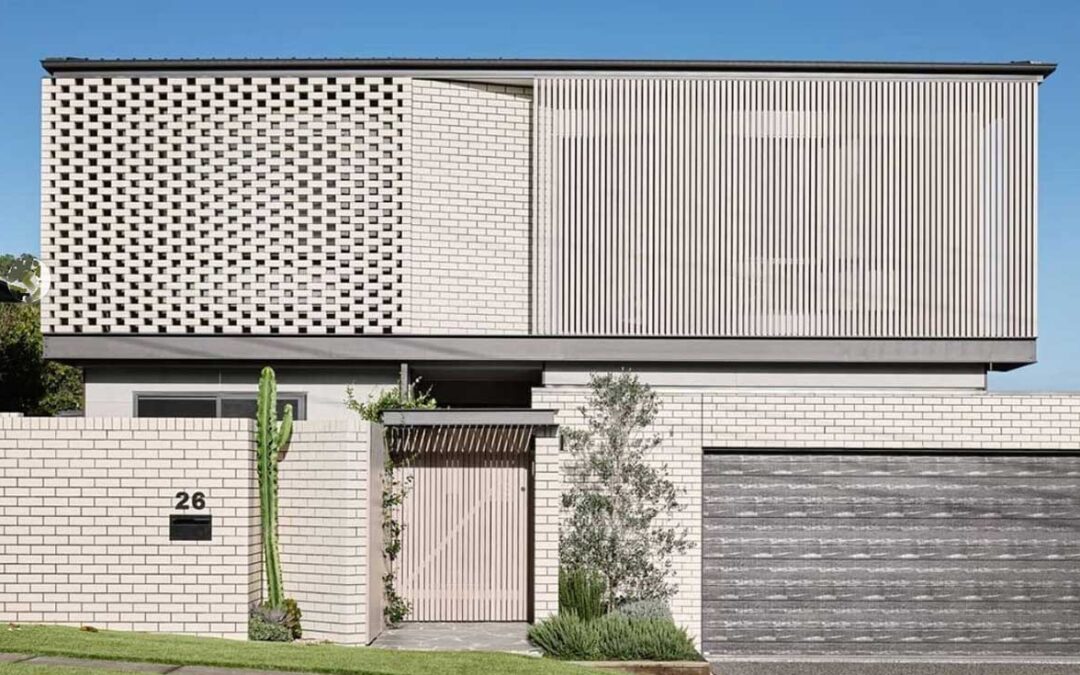
Exploring Contemporary Applications of Brise Soleil
Contemporary applications of Brise Soleil combine functionality, aesthetics, and sustainability, making them a popular choice in various building designs worldwide.

